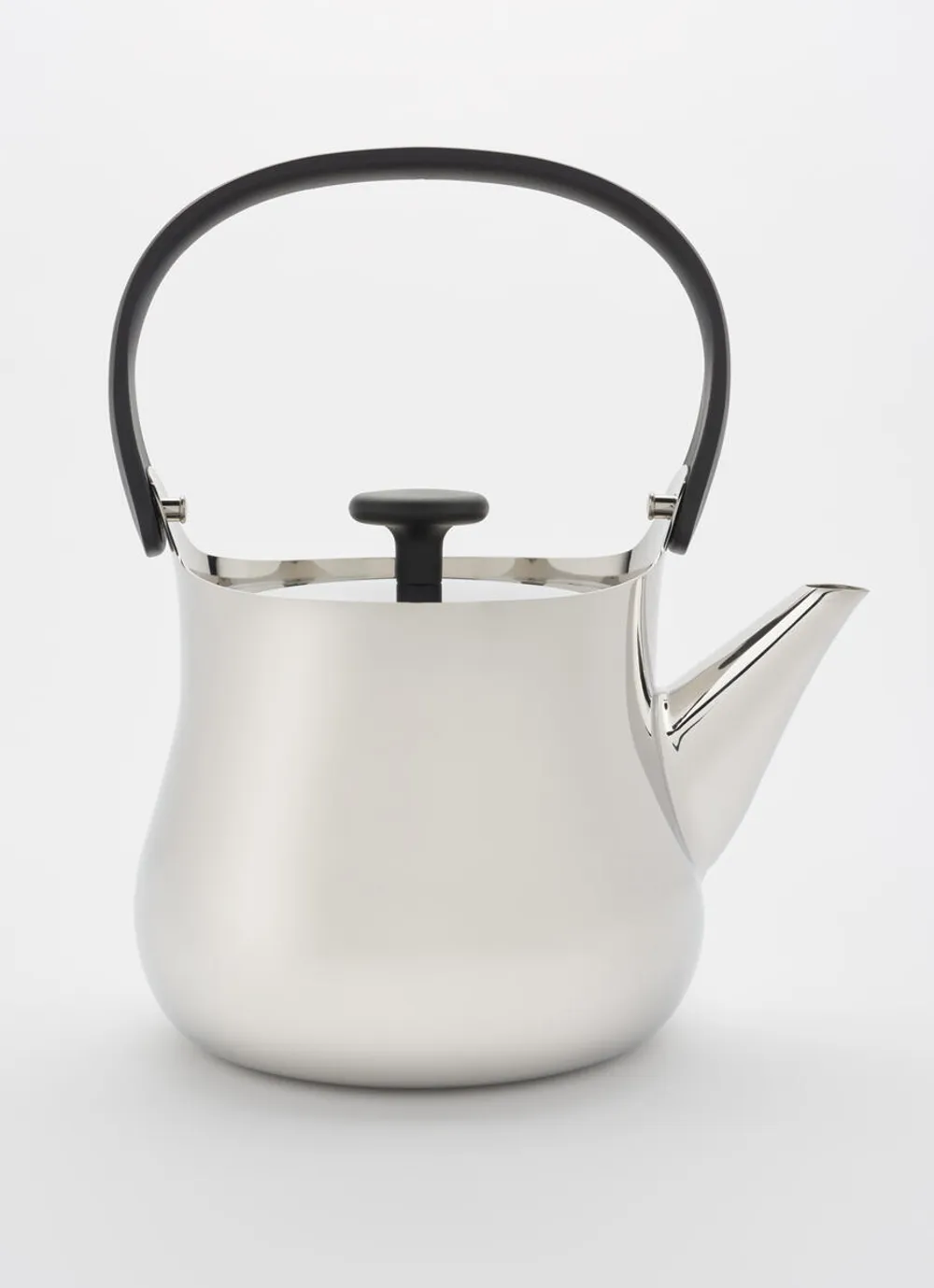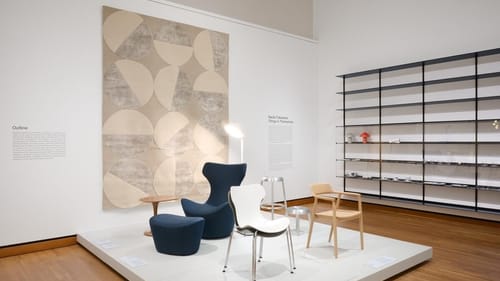Stay in the Loop
BSR publishes on a weekly schedule, with an email newsletter every Wednesday and Thursday morning. There’s no paywall, and subscribing is always free.
A world-renowned designer gets his first major US solo show at the PMA
The Philadelphia Museum of Art presents Naoto Fukasawa: Things in Themselves

Ever wanted to throw the remote across the room? Naoto Fukasawa understands. For 45 years, he’s designed everyday things that simply do what people want them to do—no tinkering, decoding, or melting down required. Items that are pleasing to look at, in an understated way. That might make you smile. All of this has made Fukasawa a highly sought designer, teacher, and consultant in his native Japan and throughout the world, as well as the 2024 recipient of the Collab Design Excellence Award. Naoto Fukasawa: Things in Themselves, now at the Philadelphia Museum of Art, is the first major solo exhibition of the designer’s work in the United States.
Please, don’t have a seat
Gallery 219 is full of everyday things, sort of. There are lots of chairs, all of which look more stylish and comfortable than the seating in my living room—and probably yours, too. Fukasawa chairs subtly scream, “Come and sit down!” This is why two guards monitor this rather small gallery, gently explaining that no, you cannot have a seat.
Even the utilitarian Za Stools (2021) beckon. Made of hand-brushed recycled aluminum, the seats have a thick bullnose edge and a slightly concave surface for comfort. It’s a timeless, universal design, in keeping with Fukasawa’s belief that designs shouldn’t represent a particular style or geographic location. That said, Za stools happen to be produced by Emeco Industries of Hanover, Pennsylvania.
The Cinnamon Armchair (2023) and Grande Papilio Armchair and Ottoman (2009) probably keep museum guards hopping. Cinnamon, conceived for the Italian firm Molteni, looks like an old-fashioned catcher’s mitt, crouching low and thickly padded, with a deep pocket. Fukasawa’s creative vision, however, was an inner tube floating down a river, and the chair looks like it would feel just that relaxing.
Papilio, Italian for butterfly, was well-named. Made by B&B Italia, the chair’s four wings open in welcome, and the ottoman, like the Za stools, has a concave surface to cradle tired legs. Both chair and footrest are softly rounded profiles. As he designs, Fukasawa considers the space an object will fill, as well as the item itself. He calls this the outline, and it’s a key element in his artistic philosophy.

Emergence, intuition, observation
Right angles and sharp edges are almost nonexistent in Fukasawa’s oeuvre. From teapots to thermometers, cell phones to CD players and pedestal sinks, surfaces don’t intersect, they merge. Take the Genkan Mirror (2024), a handmade prototype for Zanat of Bosnia and Herzegovina. It’s an unadorned wall-hung oval mirror framed in a wide band of walnut, simple and exquisite.
Fukasawa’s shorthand for his design priorities is explained as you move through the exhibit. In addition to outline, there’s emergence, his term for the synergy resulting from the interaction of designers, manufacturers, and artisans, which produces something more than the sum of its parts. Super normal refers to objects that are functional and modest, that work without drawing undue attention or dominating a space. To Fukasawa, the “best designs are those that dissolve into behavior.”
But to achieve that, behavior must be studied, which is where without thought comes into play. To design objects that can be picked up and used intuitively, designers must closely observe people and environments. The principle is so central to Fukasawa’s approach that Without Thought is the title of his annual design workshop.
Smaller Fukasawa-designed items are displayed on shelves: easy-to-read wristwatches, streamlined cutlery, and cell phones with larger, alternately-colored buttons for presbyopic, thick-fingered callers. Pause at the seemingly unremarkable glass tumbler with a ridge in the middle, a feature that makes it easier to hold, especially if the beverage is cold and the day is hot. It’s something that might not be noticed at all, but a user may unconsciously remember that this glass felt good in the hand, even without realizing why.
Let there be light … and sound
Two items deviate ever so slightly from the designer’s understated elegance. Fukasawa collaborated with Spanish porcelain producer Lladro S.A. on the Mokuren Chandelier (2023), which resembles the top of a magnolia tree. LED lights glow in creamy porcelain buds positioned at the tips of lacquered black branches, set in tiers. Though uncharacteristically decorative by Fukasawa standards, Mokuren is far from typical.
The cuckoo clock, another outlier, is pure Fukasawa: stripped down and dryly humorous. Forget dangling pinecones, dancing milkmaids, marching soldiers, and painted battlements—it’s a peaked-roof wood case with a hole—boring, frankly. But stick around. When the hour is struck, a small bird bobs out to sing the time and, in the library-like gallery, immediately causes a rush to his end of the room.
Recognizing what’s already there
The familiarity of the objects on view may be due to the fact that they’re what we use every day, but it may be more than that. Their design, spare but warm, sophisticated but understandable, makes you want to use them (but please don’t, in the gallery, anyway). That feeling confirms something Fukasawa wrote in a 2018 monograph, Embodiment: “I try to design not from the perspective of creating something new, but rather from a viewpoint of helping people realize something they knew already.”
At top: Naoto Fukasawa’s Cha Teapot/Alessi. (Photo by Aimee Almstead, courtesy of Philadelphia Museum of Art.)
What, When, Where
Naoto Fukasawa: Things in Themselves. Through April 20, 2025, at Philadelphia Museum of Art, Gallery 219, 2600 Benjamin Franklin Parkway, Philadelphia. (215) 763-8100 or philamuseum.org.
Accessibility
The Philadelphia Museum of Art is a wheelchair-accessible venue and offers varied accommodations for visitor needs. For questions and more information, please contact the museum.
Sign up for our newsletter
All of the week's new articles, all in one place. Sign up for the free weekly BSR newsletters, and don't miss a conversation.
